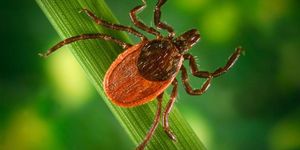No one left behind...right?
A recent study published in the journal One Earth evaluates the impacts of climate change on global food production under a “business as usual” scenario. The study was led by scientists at Aalto University who considered what the future of our food will look like if carbon dioxide emissions continue at current rates.
“Our research shows that rapid, out-of-control growth of greenhouse gas emissions may, by the end of the century, lead to more than a third of current global food production falling into conditions in which no food is produced today -- that is, out of safe climatic space,” explains Matti Kummu, who is a professor of global water and food issues. Kummu and colleagues define the concept of safe climatic space as regions where 95% of crop production currently takes place.
“The good news is that only a fraction of food production would face as-of-yet unseen conditions if we collectively reduce emissions so that warming would be limited to 1.5 to 2 degrees Celsius,” Kummu adds.
Safe climatic spaces are affected by three main climatic conditions: rainfall, temperature, and aridity. It is well documented that certain regions of the world such as Southeast Asia and the Sahel in Africa are more vulnerable to the extremes of these conditions, ultimately putting these populations at greater risk of food insecurity. This study analyzed how those conditions impact 27 of the most important food crops and seven different livestock.
“Food production as we know it developed under a fairly stable climate, during a period of slow warming that followed the last ice age. The continuous growth of greenhouse gas emissions may create new conditions, and food crop and livestock production just won't have enough time to adapt,” explains lead study author Matias Heino.
The analysis determined that while 52 of the 177 countries studied would maintain their classification of a safe climatic space in the future, many of the most vulnerable countries (Benin, Cambodia, Ghana, Guinea-Bissau, Guyana, and Suriname) will suffer the highest levels of threat to their safe climatic spaces due to their reduced capacity to adapt. According to the findings, 20% of the world's crop production and 18% of livestock production under threat are found in countries with low adaptation resiliency.
Nevertheless, the tropics will by no means be the only food production regions to suffer; the Arctic, North America and other regions of boreal forest will also be dramatically affected. “If we let emissions grow, the increase in desert areas is especially troubling because in these conditions barely anything can grow without irrigation. By the end of this century, we could see more than 4 million square kilometers of new desert around the globe,” Kummu says.
“We need to mitigate climate change and, at the same time, boost the resilience of our food systems and societies -- we cannot leave the vulnerable behind. Food production must be sustainable,” urges Heino.
Sources: One Earth, Science Daily








